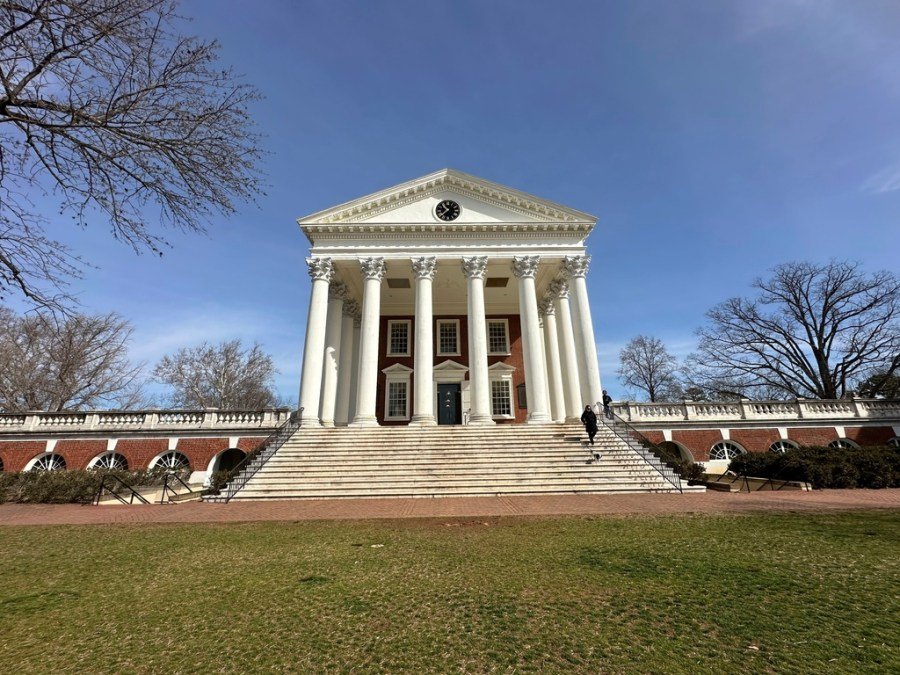
Across the country this fall, millions of college students are walking into math classrooms worried about their future — perhaps with good reason.
For decades, mathematics — particularly college algebra — has functioned less as a bridge to opportunity than as a barrier to completion. Nationally, college algebra is one of the most common stumbling blocks to degree completion, with high failure and withdrawal rates that disproportionately affect first-generation and non-white students.
For many students, the challenge is made all the more frustrating because they are unconvinced of math’s relevance. A new Gallup survey found that while older adults overwhelmingly view math as essential to their daily lives and careers, young adults ages 18-24 are far more skeptical.
Mathematical thinking is valuable for everyone, but for many students, it is taught in ways that appear abstract and disconnected from real-world applications and divorced from their aspirations. That disconnect has real consequences not just for persistence, graduation, and career readiness, but also for informed citizenship.
Math has never been more relevant, with mathematical thinking and reasoning not only shaping how we navigate personal finances and other everyday tasks, but also how we make sense of the growing flood of data and information around us and harness the power of artificial intelligence.
Yet educators continue to present math as something external that students must reach to connect with. In reality, math is already embedded in our daily lives. From nurses’ dosage calculations to technicians’ welding measurements, math is everywhere — even if it doesn’t always look like math.
Redesigning college math experiences — from instruction to internships — means ensuring that what students learn actually equips them with the reasoning and problem-solving skills their lives and careers will demand. Over the last decade, states and institutions have begun moving in that direction. A growing number of institutions now offer math pathways that are more tightly aligned with the students’ programs of study and career goals.
Quantitative reasoning courses, for example, focus on applying math to everyday problems and decisions, like calculating inventory for a business, the right medication dosage, or the best layout for planting crops on farmland. Statistical reasoning pathways help students analyze data, interpret uncertainty and make informed decisions in real-world contexts. “STEM-Prep Pathways,” meanwhile, helps students build strong algebra and calculus skills that are directly relevant for fields like science, technology and engineering.
Consider, for instance, a nursing student who once faced years of repeating high school-level coursework through developmental math before reaching clinicals. Today, through a math-for-nurses pathway, they can learn dosage calculations, ratios and data interpretation directly tied to their future role. The nursing student no longer sees themself as “bad at math,” but as someone fully capable of mastering exactly the skills their profession demands.
The results of this approach are impressive. Colleges that have implemented these math pathways have seen more students completing requirements on time, persisting in their programs, and graduating with the skills employers demand.
At Milwaukee Area Technical College, for instance, shifting from a one-size-fits-all requirement to multiple math pathways opened the door for more students in technical programs to advance, rather than stall in unnecessary remediation. In the SUNY System, the introduction of a statistical reasoning pathway across its community colleges improved gateway-math completion rates, helped narrow gaps in student outcomes and boosted student engagement.
In states like Georgia, Louisiana and Tennessee, statewide policy has accelerated these reforms, ensuring that math supports — not hinders — student success. Other states can follow these promising examples by reevaluating math requirements across university and community college systems, and by offering financial incentives to help campuses expand such pathways.
In turn, colleges should invest in targeted advising and equip faculty with the professional development, time and resources needed to redesign courses. Employers also have a critical role to play by identifying the real-world math skills they value most, helping ensure alignment between classroom learning and career demands.
Colleges now face a choice: redesign math courses to become gateways to success, or cling to outdated models that act as gatekeepers. The stakes are high. At a moment when automation, AI and data literacy are reshaping the workforce, mathematical reasoning is more critical than ever.
Colleges need a future-approach approach to teaching math that offers math learning experiences that respect students’ ambitions, honor their futures, and equip them with the skills our economy needs. The question has never been whether math is relevant, but whether we can teach it in ways that make its relevance clear to today’s students.
Victoria Ballerini, Ph.D., is director of the Strong Start to Finish Initiative at the Education Commission of the States; Ann Edwards, Ph.D., is director of the Carnegie Math Pathways project; and Katherine L. Arrington, Ph.D., is the immediate past president of NCSM: Leadership in Mathematics Education.


